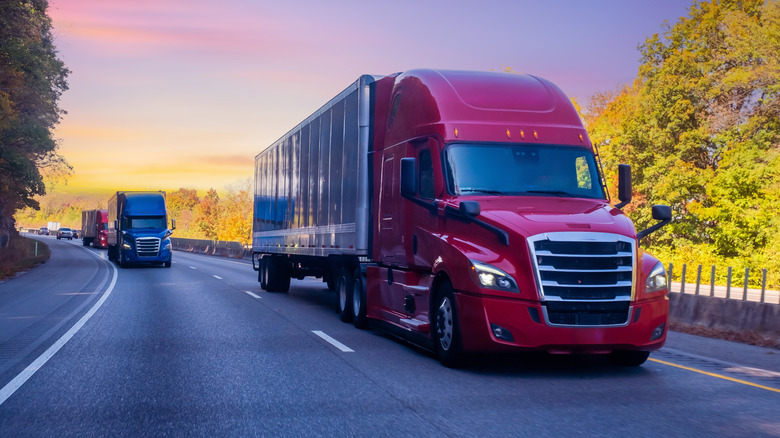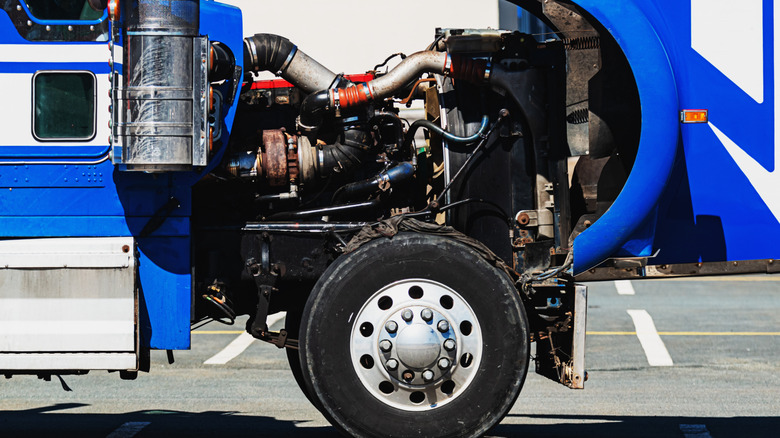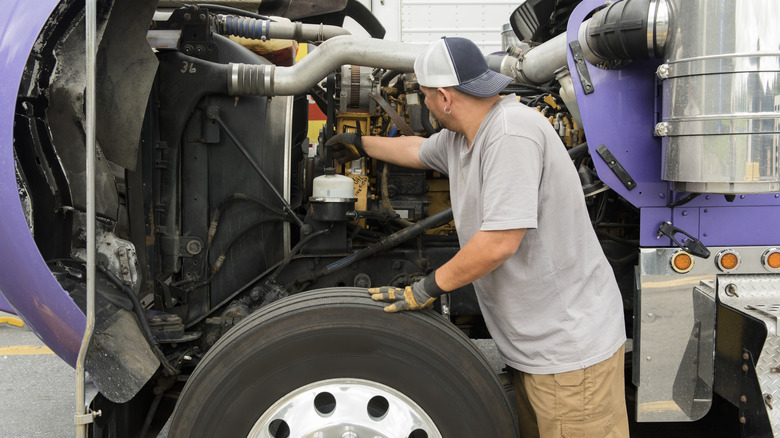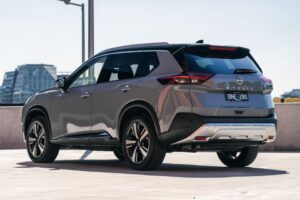V8 engines are among our favorites. They make big power and sound that is, in the vernacular of Boston, wicked awesome. It’s only natural to think that such big engines would power the big semi trucks that transport most cargo in the U.S., but that isn’t true. Instead, you’re more likely to find an inline-6 under the hood of most modern semis.
There are some important reasons why V8s have fallen out of favor in trucking. A V8 makes great horsepower, but towing heavy loads is all about torque. The inline-6 engines powering most modern semis make between 400 and 600 horsepower. That’s not much more power than a well-equipped pickup truck these days, and is likely all the horsepower you really need anyway. However, most pickups don’t make anywhere near the 1,000 to 2,000 pound-feet of torque that semi engines do. Big displacement in the 13 to 16-liter range, turbocharging, and diesel power maximize torque, and it shows in those four-digit figures.
Another factor is that in the U.S., semis are typically limited to a maximum weight of 80,000 lbs. Scania makes a 16.4-liter V8 producing 2,350 lb-ft used in Europe, but many of those countries allow heavier loads than we do. A smaller inline-6 can handle lighter American loads just fine.
Sometimes less is more
Some say that the inline-6 engine configuration itself inherently favors torque over horsepower, but this isn’t entirely true. A longer stroke, which is the distance the piston travels inside the cylinder, as well as larger cylinders overall, is what produces more torque, regardless of cylinder configuration. However, the tall, skinny design of an inline-6 makes it easier to design one with a long stroke. Giving a V8 more stroke will make it wider as well as taller, which means a tighter fit under the hood. A semi has room to spare for a long, tall inline-6, but will always be limited in how wide it can be.
One trade-off of an engine with a long stroke is that it can’t turn fast RPMs like a high-horsepower engine with a short stroke. Again, what may appear to be a disadvantage is actually a strength in this application. Lower RPMs put less strain on the engine, making it more reliable and reducing overall operating costs.
Simpler is better
The fundamental nature of an inline-6 is simpler than a V8. There’s only one cylinder head, not two, so it has fewer parts. It’s also easier to access and work on, reducing both maintenance costs and the time the truck is off the road. All this, plus its low-revving nature, makes the engine slightly more fuel efficient than a higher-revving V8. It’s not much more efficient, but when you’re talking six to eight MPG, every little bit helps and makes a big difference over thousands of miles.
The final nail in the V8’s coffin was increasingly strict emission regulations for semis. It’s easier to get a smaller displacement inline-6 to comply than a bigger V8, so that’s what most manufacturers chose to do. In contrast, some companies like Caterpillar simply quit producing semi-trucks, focusing instead on off-highway applications. While electric options like the Tesla Semi may play a role in the future, the inline-6 remains the workhorse of American trucking for now.






